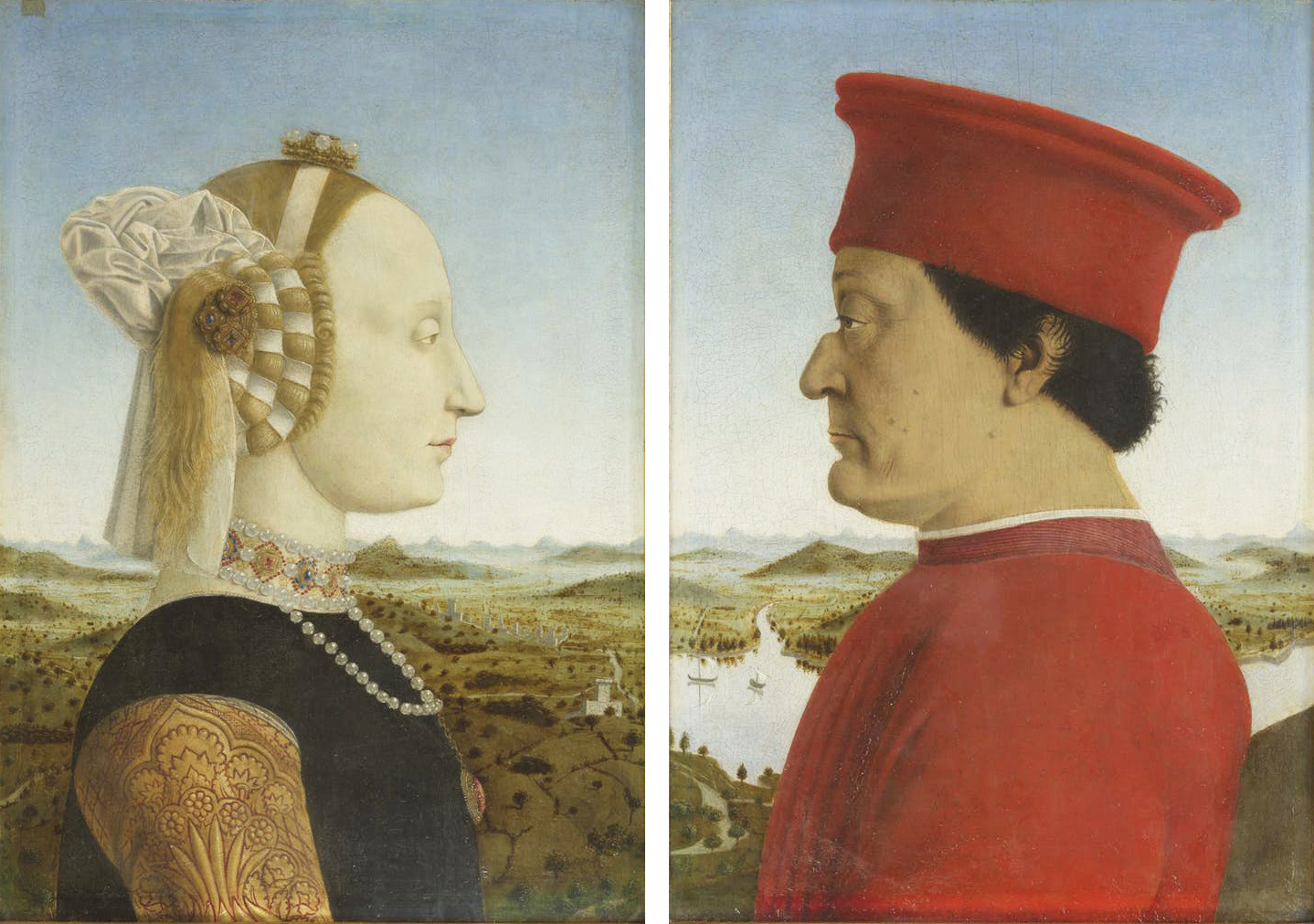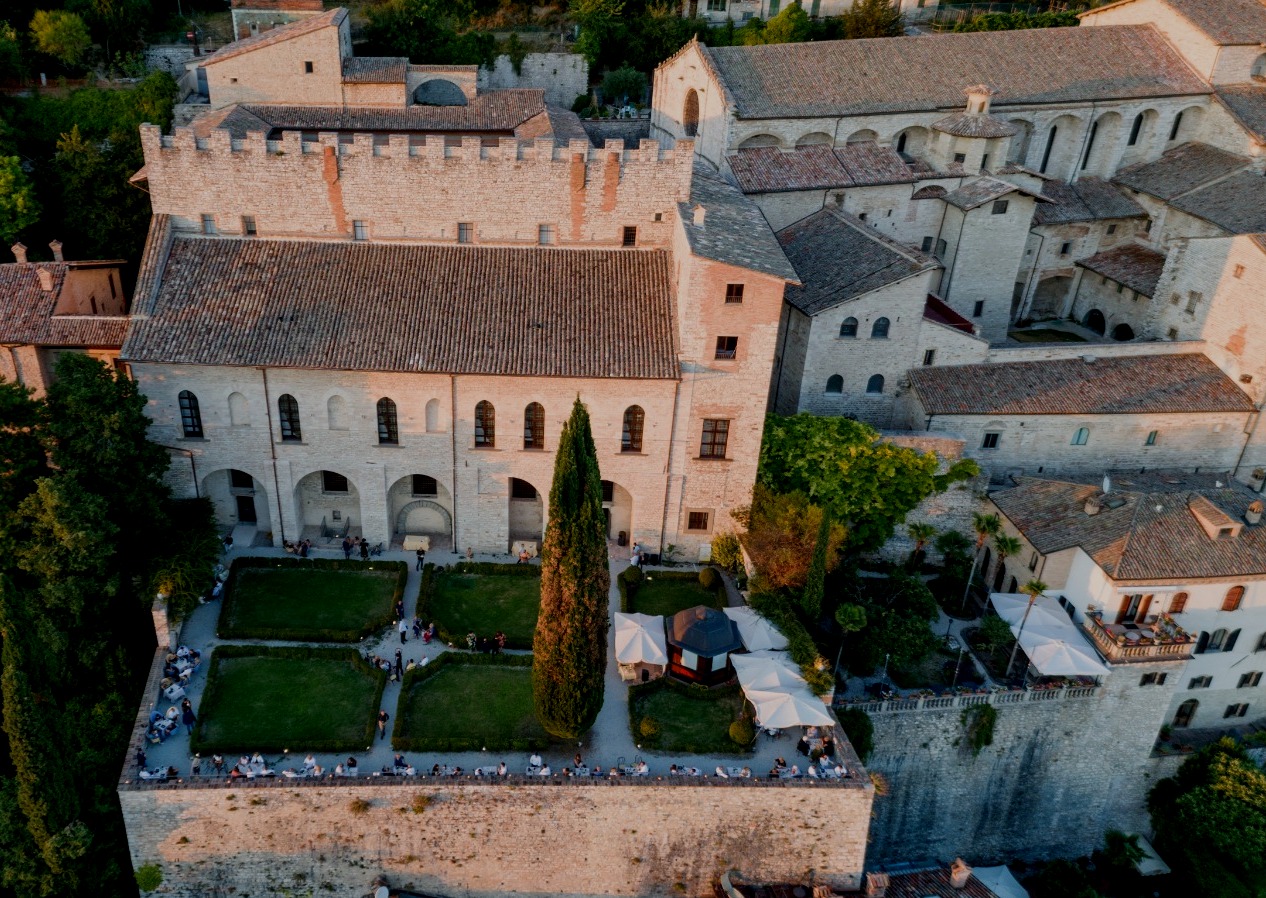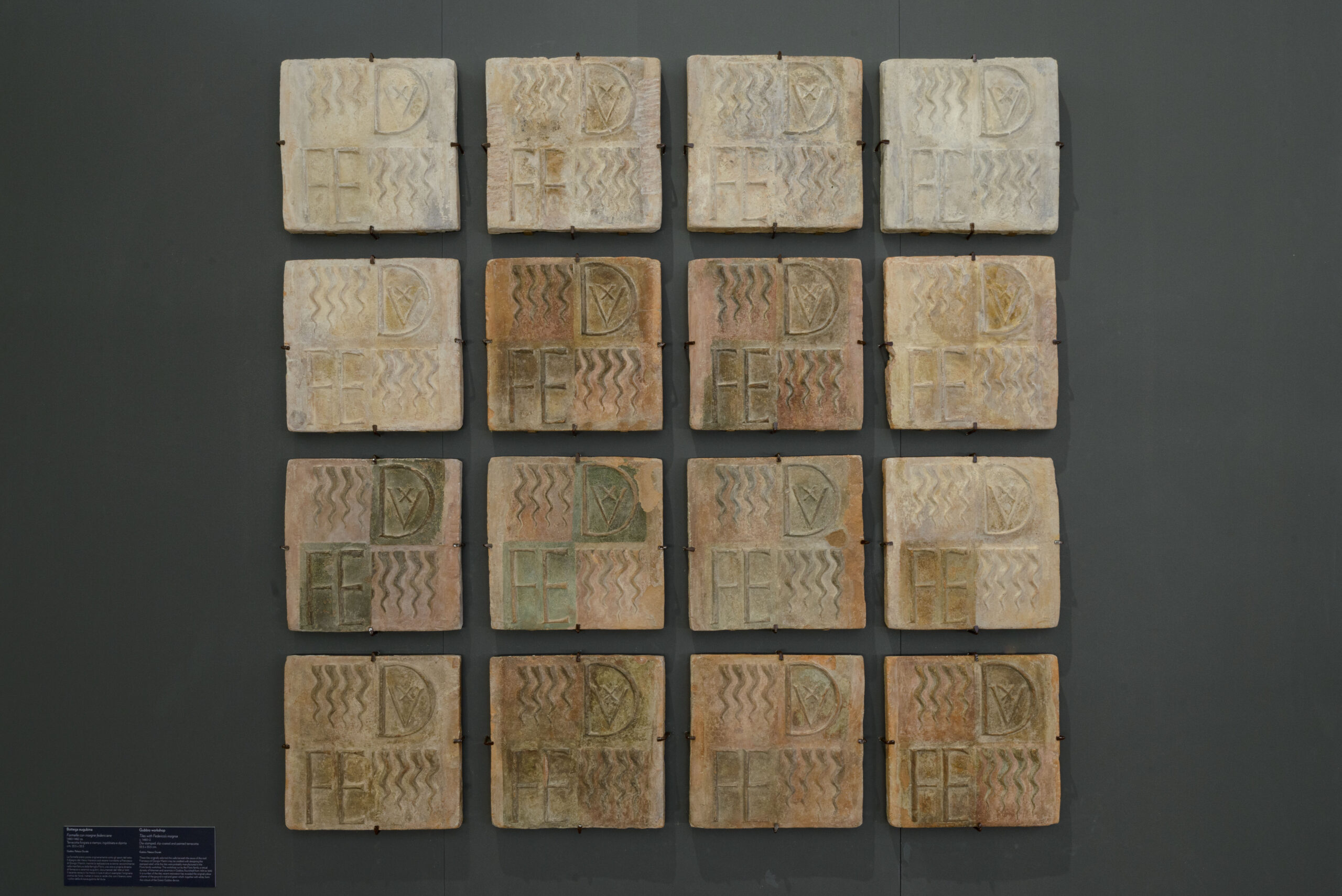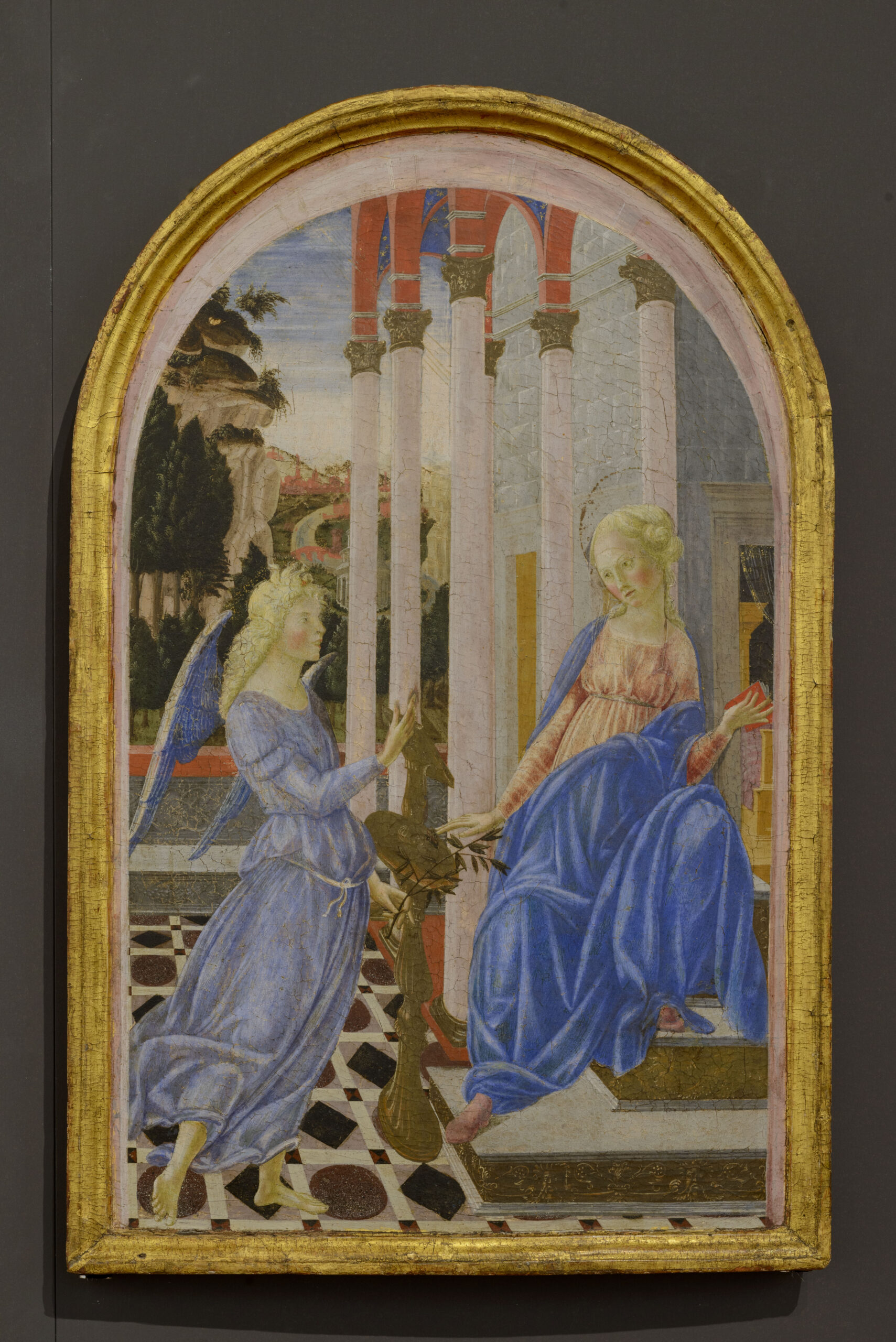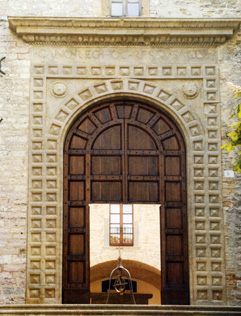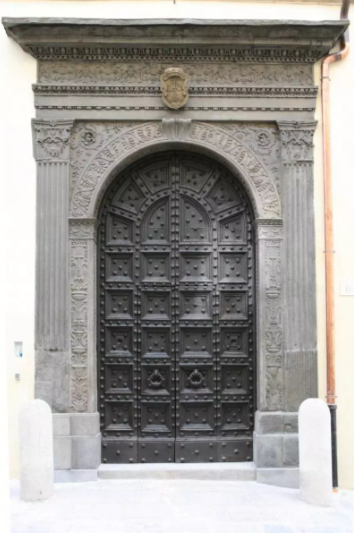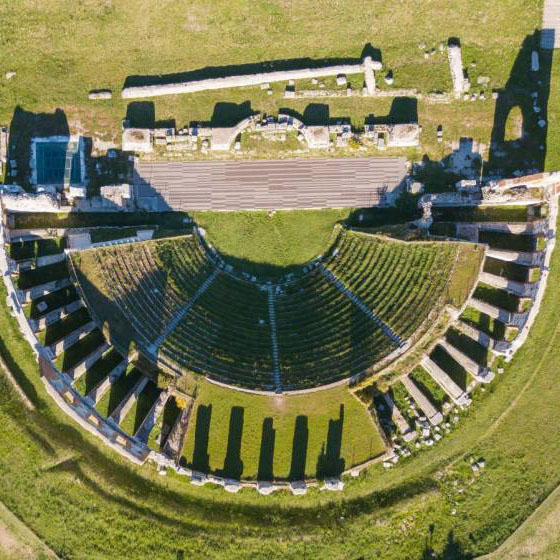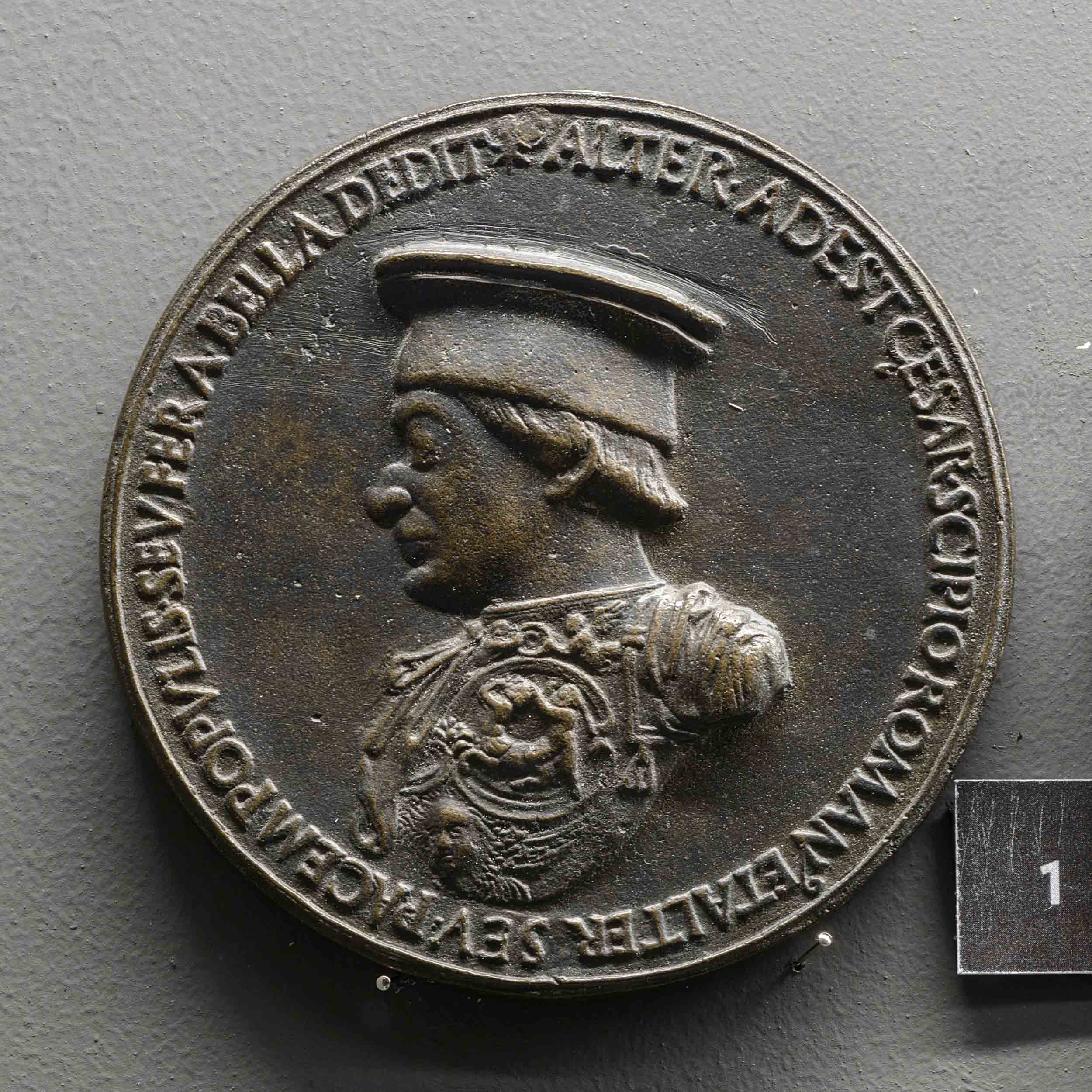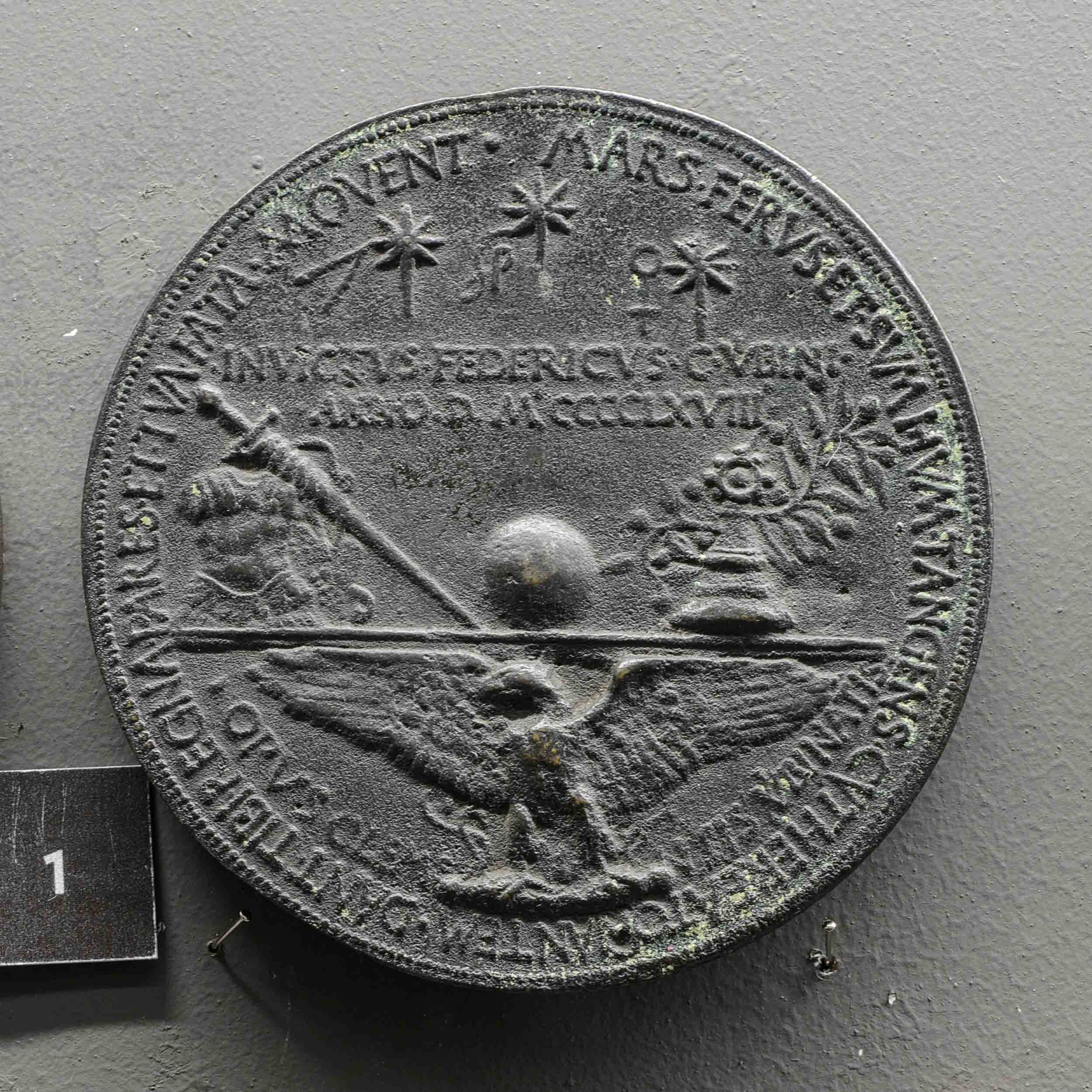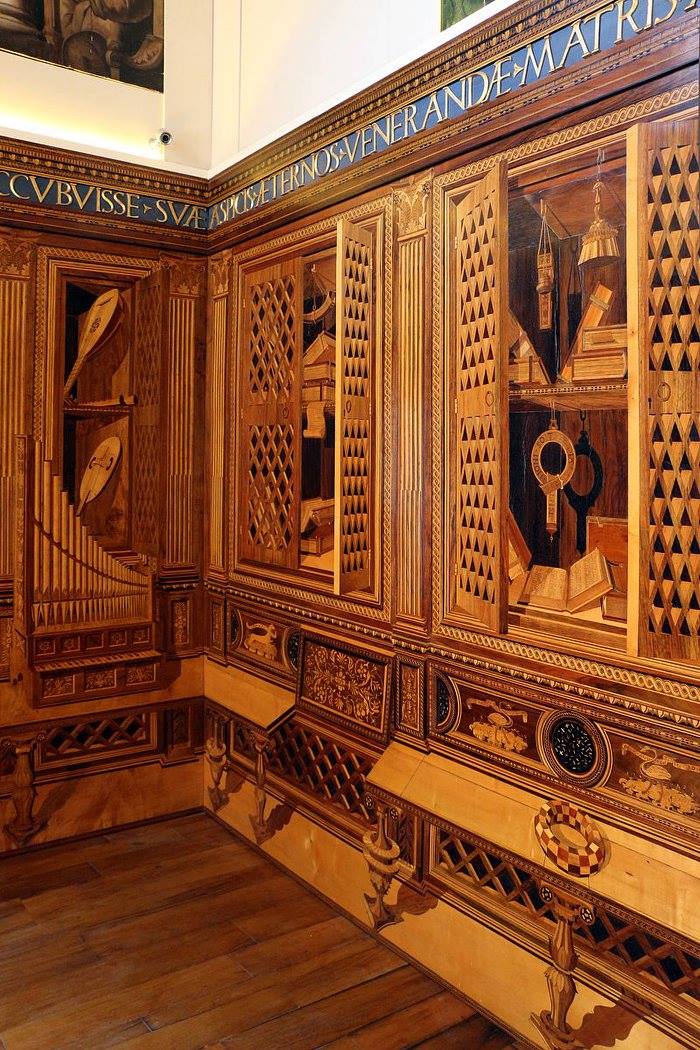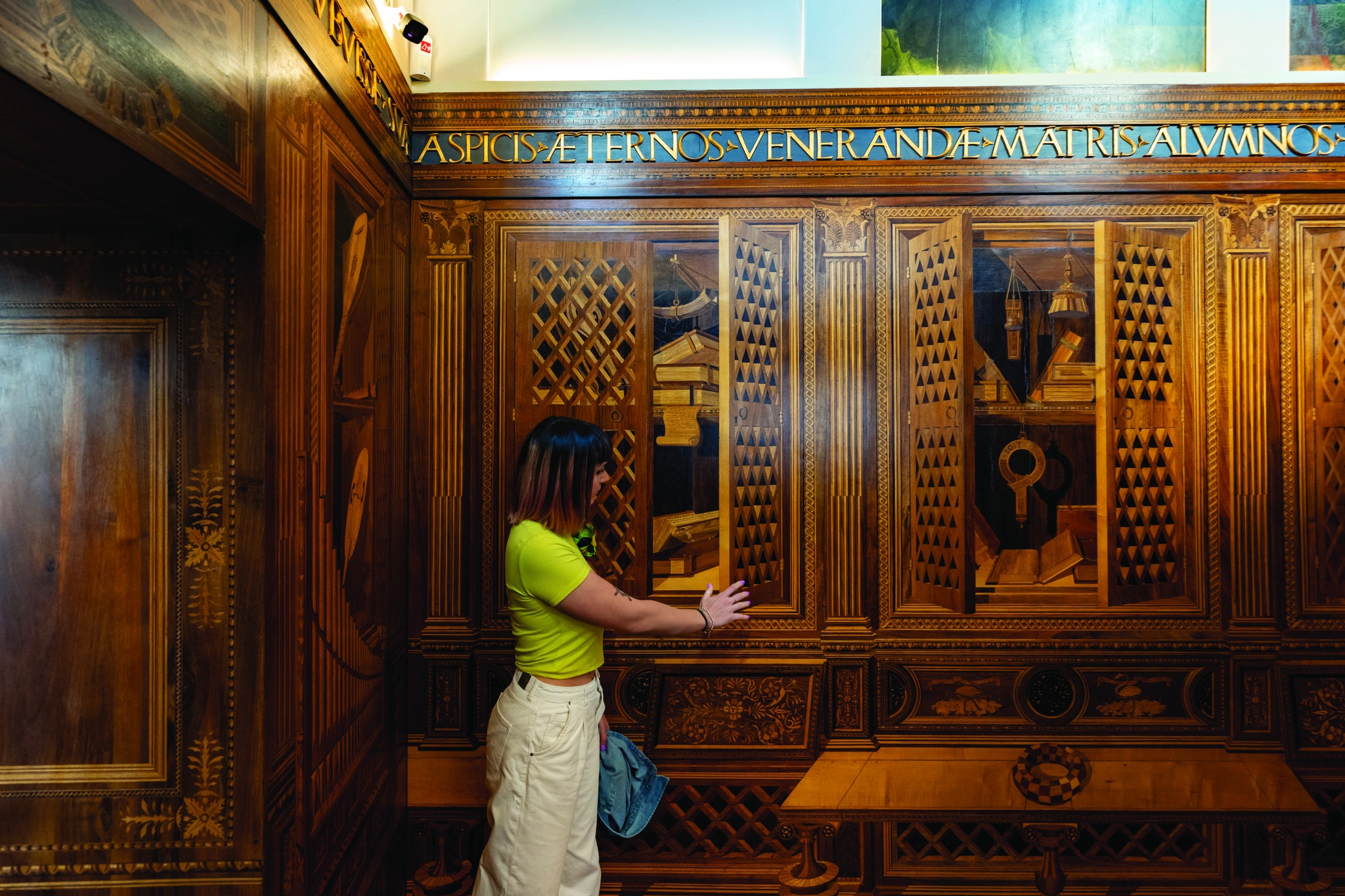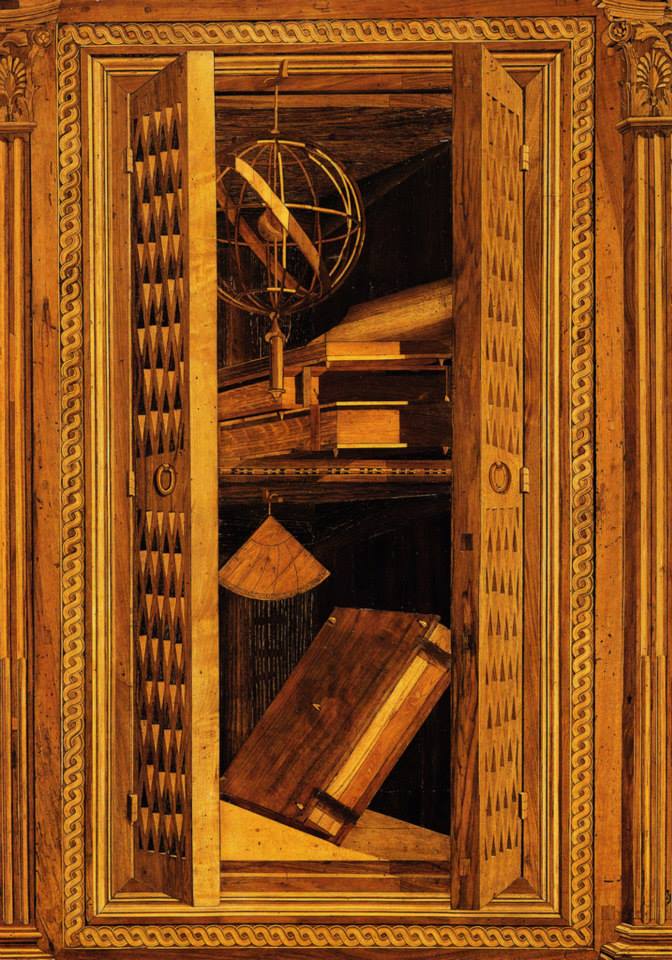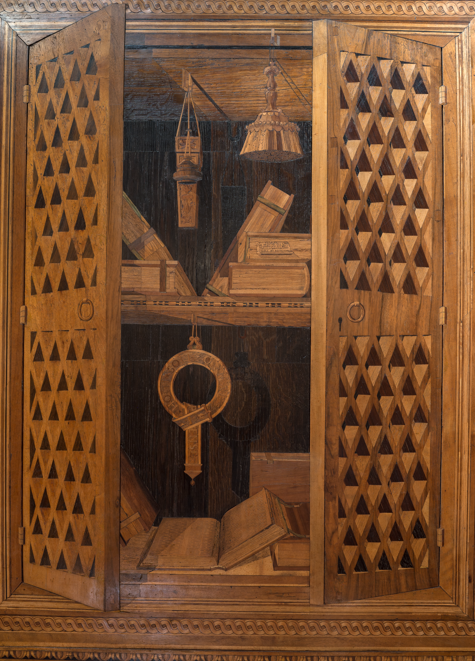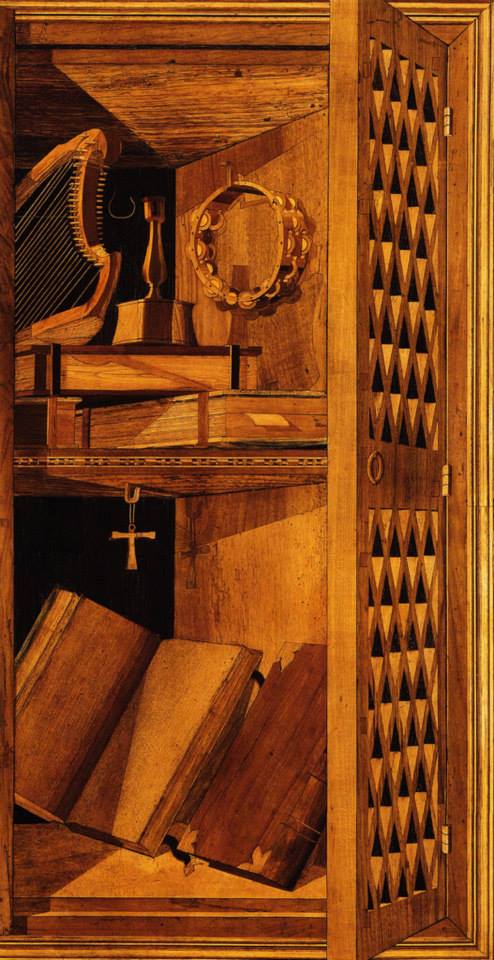FROM THE DUCAL PALACE BUILDING SITE TO THE TOWN… FEDERICO DA MONTEFELTRO’S INFLUENCE IN GUBBIO
The Ducal Palace is, par excellence, the place in Gubbio where the memory of Federico da Montefeltro is better preserved: Gubbio, his hometown and second capital city of the Dukedom.
By order of the Duke, the court residence was built, opposite the cathedral, in a high position on the slopes of Mount Ingino. Unlike Urbino’s one, the Palace of Gubbio is almost disguised among the medieval architecture of the town, expressing only inside its Renaissance charm.
The original splendour of the palace is still recognisable today in the elegance of the architecture and furnishings that survived time and dispossession.
In Federico’s time the Palace was called “Corte Nuova” and it was described as magnificient, gorgeus and sumptuous. The best artists were chosen by Federico who relied on the masters who had previously worked in the Palace of Urbino. Architects, sculptors, inlayers, painters, all moved to the new building site of Gubbio with a repertoire of architectural solutions that made the Montefeltrs style immediately recognisable.
Absolute director of the undertaking was Francesco di Giorgio Martini, a poliyedric artist who from 1474 to 1480 was responsible for the design of the new Renaissance residence. He also designed decorations such as friezes for doors, fireplaces, windows and the perspective images for the famous Studiolo.
Francesco di Giorgio Martini got artistically inspired by the large presence of ancient and sometimes monumental remains such as the Roman Theatre. Grotesque, candelabra, Cornucopias, palmettes, volute decorations, dolphins and flowers are the main decorative elements of the windows overlooking the courtyard and of the indoor fireplaces. On the doorframes we find coat of arms, crest celebrating the power of Federico and his value as a state-man and warlord. The refined decorations on grey sandstone, were made by Antonio Barocci’s workshop with the help of local sculptors.
The Ducal Palace with its decorations and furnishings had a great influence on the arts in Gubbio and made sure that new commissions in the town were orientated towards the new Renaissance artistic language. Actually the most important noble houses in 14th and 15th century in Gubbio renewed their residences in the Montefeltro’s style as we can see in the beautiful portal of Bartolini Della Porta Palace. The same testimonies are recognisable in the portal decorations of St. Ubaldo’s Church on the top of Mount Ingino or in the less known decorations of a shrine dedicated to the Vergin Mary in the former town hospital near S. Francesco’s Church. Also the wood inlays of the Studiolo (in the Palace there is a replica today) had a great influence on the local artistic production. The original one was made by Giuliano da Maiano’s workshop, adopting the perspective inlaying technique to crate the illusory presence of furniture and symbols of the Duke’s cultural interests. The Studiolo was a place dedicated to meditation and contemplation; the important guests visiting the ducal court were astonished by it and the Studiolo became a reference for many artists. An example is the rotating wood book-stand in the choir of S. Domenico’s Church. This work is attributed to an anonymous 14t century Umbrian-Marche master who reached the hight in the prolific and appreciated production of the wood artisans. Among them, to mention but a few, Mariotto di Paolo Sensi called Terzuolo, Pierangelo di Antonio della Mea and Luca Maffei’s workshop.
In this cultural atmosphere where the rediscovery of the ancient was a very strong peculiarity of Montefeltro’s style, the acquisition of the famous Iguvine Tables could take place. The seven bronze tables were found in Gubbio near the Roman Theatre in 1444, the very year of Federico’s rise to power. The Tables are now preserved displayed in the Civic Museum and date back to 3rd– 1st century b.C. They constitute the longest and most important ritual text we have from Ancient Italy, le language is Ancient Umbrian transcribed in two of the international alphabets of the time, the Etruscan on and the Latin one. The notary Ser Guerriero, Federico’s trustee was in charge of purchasing the Tables. Together with the City magistrates. it represented a unique event because no bishops, princes or men of letters came into possession of the precious document, but a public institution in the interest of the town. The event can actually be considered one of the first examples of conservation and museum display of ancient remains.
GUALDO TADINO AT THE TIME OF THE MONTEFELTROS
The poets Francesco and Girolamo Tromba
by Gabriele Passeri
In the period straddling the 15th and 16th centuries,GualdoTadino evolved into an extremely lively and productive cultural centre resulting in significant developments, not only in the surrounding area, but also more generally across Italy. The closing years of the 15th century represent a fundamental turning-point given that Gualdo’s location bordering on the Dukedom of Urbino, inevitably transformed into a bastion for the Papal States, which made it the site of an autonomous Legation. The presence of a Cardinal’s Court within the territory encouraged a notable cultural expansion with ramifications throughout multiple aspects of the social fabric. During this period of splendour, the small Umbrian town underwent radical restoration to make it fit to host the courtly nobility; the Rocca Flea, originally a purely defensive fortress, was substantially overhauled to turn it into a typical Renaissance palazzo. The municipal aqueduct was rebuilt thanks to the restoration work carried out by the Papal Legation and the town was provided with a number of fountains the most notable of which can still be seen backing onto the Cathedral of San Benedetto. This was the work of the sculptor, Michelangelo Lucesole, following the design by Antonio da Sangallo Il Vecchio.
These vibrant years full of creativity constitute an important landmark in Gualdo’s cultural history and among the many illustrious personalities, who have been the object of scholarly documentation, there are two poets of the Renaissance, Francesco and Girolamo Tromba, both born in Gualdo, who have been somewhat overlooked. Very few biographical details are known concerning these two authors but they are traditionally held to have lived in the years spanning the end of the 15th century and the first half of the 16th when they were both active. It is highly likely that their common surname is not a family name but, rather, the indication of a professional activity; it is reasonable to suppose that they were both trumpeters and ballad singers. Presumably, Girolamo was the elder of the two since a work by him “Libro delle battaglie del Danese” was published in 1498, a considerable time before Francesco’s work “Draga de Orlando innamorato” appeared in 1525.
Of the two, Francesco Tromba was undoubtedly the more famous since we have a far more extensive list of titles accredited to him. Like many other skilful writers of his age, such as Boiardo and Ariosto, he mainly devoted himself to writing poems about chivalric and warlike enterprises in ottava rima. As already stated, we do not know much about his life, but, thanks to his published work and to a few brief personal references in his poems, we can recognize a poetic production which would certainly have been known and appreciated by members of the higher-ranking classes of the period. In all probability, he was a courtier principally attached to the Baglioni family from Perugia but also in the household of Felice della Rovere, Pope Julio II’s illegitimate daughter. Among his works we should mention: Trabisonda, date uncertain; Guerre e battaglie nuovamente fatte in Provenza, Perugia 1525; Opera nova chiamata la Draga de Orlando innamorato, Perugia 1525; Rinaldo furioso de messer Marco Cavallo anconitano, Venice 1526; Incomincia el secondo libro della Draga de Orlando, Perugia 1527; Rinaldo furioso di Francesco Tromba da Gualdo di Nucea, Venice 1530; Rinaldo furioso. Il primo e il secondo libro di Rinaldo furioso di Francesco Tromba di Gualdo di Nucea, Venice 1530. In the course of time, Tromba’s compositions were subjected to numerous interpolations and rewritings, in some cases, even the author’s name was changed or omitted as happened in the case of “Rinaldo furioso” which was falsely attributed to Marco Cavallo, or in certain editions of “Trabisonda” from which the author’s name is entirely missing. As far as this last work, the Trabisonda,is concerned, two distinctly contrasting views have been expressed by literary critics with F.S. Quadrio attributing it definitely to Francesco Tromba, while Melzi considers it to be a false attribution. In the work included in the Bibliography, R. Guerrieri, the notable scholar of Gualdo’s history, who was fully conversant with this controversy, claims authorship for the Tromba brothers thus lending credence to Quadrio’s theory.
Bibliography
- R. Guerrieri, Vita civile ed ecclesiastica della città di Gualdo Tadino, Gubbio 1933
- F.S. Quadrio, Della storia e della ragione d’ogni poesia, IV, Milan 1749
- Carlotta Francesca Maria Sticco – Dizionario Biografico degli Italiani – Volume 97 (2020)
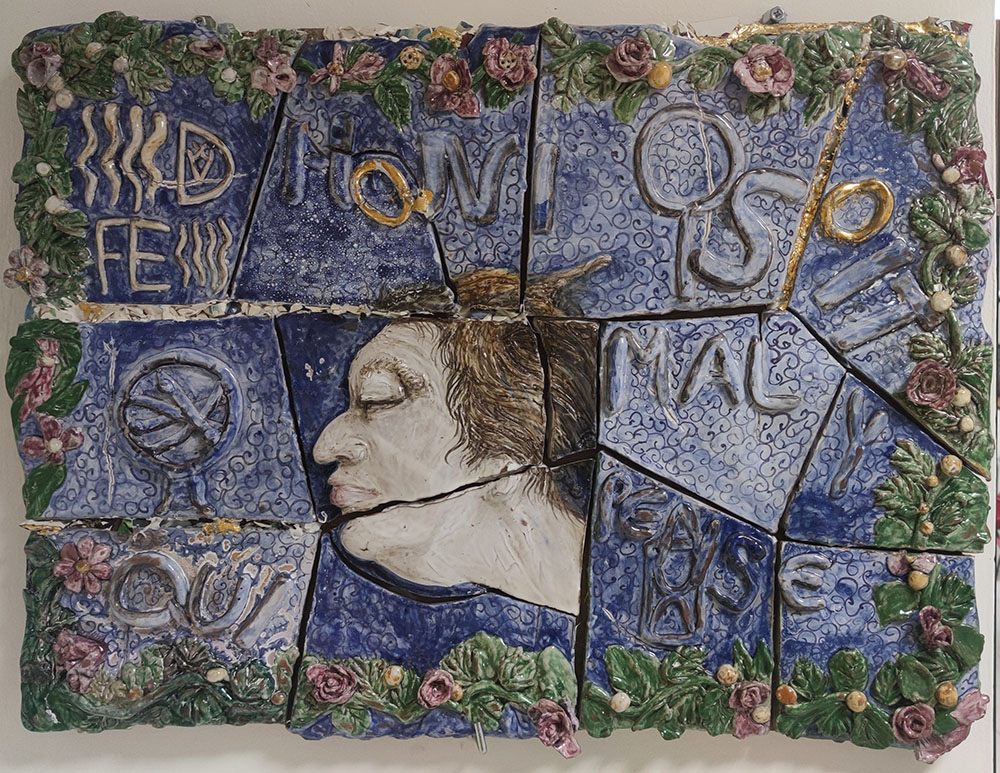
Federico da Montefeltro, ceramic panel
FOSSATO DI VICO
What Federico da Montefeltro and Fossato di Vico have in common are Federico’s interest in culture and literature. Indeed, Federico set up – with great commitment and dedication – the prestigious library located inside the Palazzo Ducale in Urbino which, among the hundreds of manuscripts, housed a great masterpiece such as the Dante-Urbinate. The relationship between Federico and the Divine Comedy is even closer and intensified thanks to Guido and Bonconte da Montefeltro, placed respectively in Canto XXVII of the Inferno and in Canto V of the Purgatory.
The Divine Comedy that unites dynasties, names and territories, indeed: Fossato di Vico has found a fourteenth-century parchment manuscript with some passages from the Paradise, kept in the municipal Antiquarium.
Furthermore, Fossato di Vico, through the frescoes located in Piaggiola, also proves to be a crossing point for notable workers such as Ottaviano Nelli, a Gubbio master also linked to Urbino, where he stayed between 1417 and 1420 and was present on several occasions until at least 1444.
Great mobility in the Renaissance, in spite of what one might think, and Fossato di Vico demonstrates the great journey of men, merchants, Madonnas, knights and artists also thanks to the Medieval Statutes of the city, which describe the city market.

